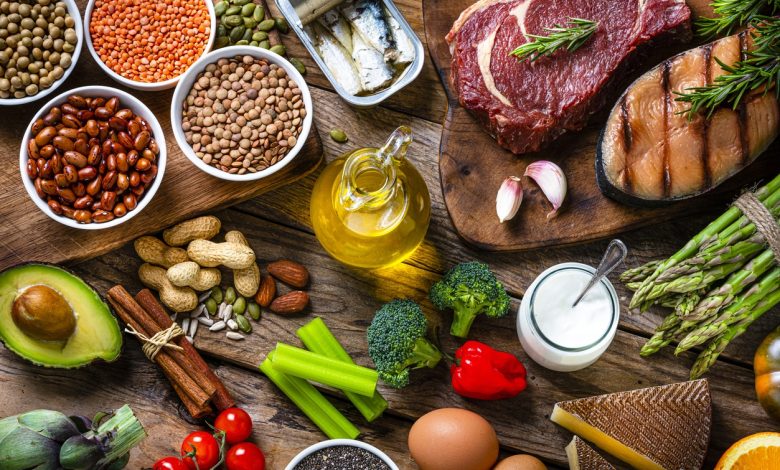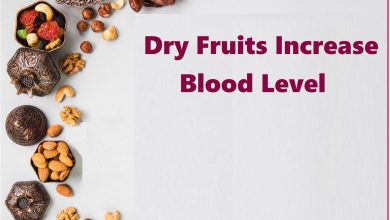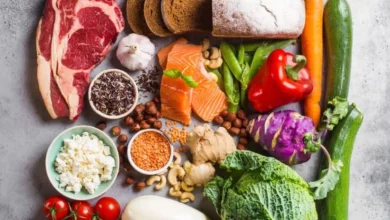5 ways to rethink what a ‘balanced diet’ means

NEW YORK – Most of us undoubtedly believe that we understand what a “balanced diet” entails rather well. And many of us might be in error.
“I don’t love the term,” Dr. Matthew Landry, an assistant professor of population health and disease prevention at the University of California, Irvine, said. “It can give people an outdated or oversimplified idea of what healthy eating looks like.”
A balanced dinner, according to some of the clients he works with as a dietician, entails “balancing the good and bad foods.” He finds the notion unsettling.
“We wouldn’t tell someone that they can smoke a couple of cigarettes just as long as they get 60 minutes of exercise during the day,” Landry stated. “So similarly, we shouldn’t tell folks that they should have foods that aren’t really nutrient-dense, just as long as they have some vegetables on their plate.”
According to Dr. Shilpa Bhupathiraju, an assistant professor of medicine at Harvard Medical School in Boston, finding balance in your food involves more than just maths. “If I tell you, ‘You should eat so many milligrammes of a certain nutrient,’ you’ll be like, ‘Well, what does that mean?'” That’s difficult to imagine, even for an experienced dietitian like her.
However, they added, eating healthily doesn’t have to be difficult. This is their recommendation.
A good place to start is by concentrating on nutrient-dense foods, according to Landry. That example, consider “Does that really have a lot of vitamins and minerals, or does it not?” before choosing what to eat.
In general, he said, the MyPlate visual from the US Department of Agriculture is a suitable model. To put it simply, half of the food on your plate should consist of fruits and vegetables. “Ideally, there should be some whole grains,” he stated, followed by a protein that was preferably derived from plants.
“That’s probably a pretty balanced kind of diet,” he stated.
The American Heart Association’s dietary guidelines also advocate avoiding tropical oils and partly hydrogenated fats in favour of liquid plant oils, selecting minimally processed meals over ultraprocessed ones, minimising added sugars and salt, and selecting dairy products that are low in fat or fat free.
Bhupathiraju stated that there are too many processed grains, added sugars, sodium, unhealthy fat sources, and a deficiency of fruits and vegetables in the traditional American diet.
She stated, “You need your fruits and vegetables, your healthy protein sources, and your healthy fat sources. It’s the combination that provides balance.” “If you’re eating whole grains and fruits and vegetables, but you don’t have a protein source, that’s not good.”
Don’t count on quick fixes
Searching for short cuts to address an imbalance is a natural reaction. However, Bhupathiraju emphasised that eating a balanced diet is essential and that balance cannot be purchased with a medication.
“Wouldn’t that be great?” said she. “I would be out of a job.”
However, she added, a nutritious diet consists of more than just one vitamin.
Consuming a range of fruits and vegetables, for instance, offers beneficial fibre, which is crucial for heart health, in addition to vitamins and minerals.
According to Bhupathiraju, some people might benefit from taking specific supplements, but only after consulting a medical practitioner. Landry stated that it’s generally advisable “to get a healthy plate first, and that can be a way that we get all the vitamins, minerals, and nutrients that you’d need.”
Similar to this, he claimed that diets that focus only on a single meal are difficult to maintain and may result in nutritional deficiencies.
“Our bodies are extremely intricate systems,” stated Landry. Therefore, despite the fact that obsessing over a single food may provide a “quick, short-term” advantage to one metric, like weight, that imbalance may be harmful in other ways, like increasing LDL cholesterol.
Bhupathiraju recommended staying away from fad diets and concentrating on eating habits supported by research.
One frequently consulted resource is the federal Dietary Guidelines for Americans. According to a 2023 AHA scientific statement, the diets that score highest for heart health are the pescetarian, Mediterranean, and DASH (Dietary Approaches to Stop Hypertension) diets.
It doesn’t have to break the bank
Fresh produce might be hard to come by in places where there aren’t many food options or where money is scarce. Make a plan, Landry advised. He advised, “Look for sales, coupons, and market promotions.” “Try to purchase in bulk when possible, especially for nonperishable items.”
Remember that frozen and canned fruit and vegetable selections can be just as nutrient-dense as their fresh counterparts.
Produce that is in season can cost less, according to Bhupathiraju. She and her family also grow part of their own food, while gardening is not a viable choice for everyone. “It’s a great way to get the kids involved and for knowing where your food came from.”
It can be exciting
According to Landry, there is no one right approach to follow a balanced diet.
“I come from Louisiana, so I like to have fish as one of my proteins,” he stated. That can entail grilling some tilapia or salmon and presenting it with quinoa, roasted veggies, and maybe a salad of spinach and avocado. “And that’s a very simple kind of balanced plate.”
You can choose. Apples and guavas may be preferred by some, but “a fruit is a fruit, in any culture,” according to Bhupathiraju.
She cooks a lot of Indian food at home and has studied diets from Puerto Rico and South Asia. Therefore, even if she cooks a lot of dals, which are Indian pulses like lentils, peas, and garbanzo beans, a Puerto Rican diet can utilise pinto or black beans instead to obtain a similar beneficial combination of nutrients.
Sesame oil is considered a healthy oil in Indian culture, although olive oil is preferred in the Mediterranean region.
Healthy options are many because “the basic principles remain the same,” the speaker stated. “Just pick your favourite food and add that to the plate.”
Think beyond the plate
According to Landry, balance in a meal refers to more than just what you’re consuming.
He said, “It’s not all about the food,” adding that your approach to meals matters as well.
He advises clients to consider how eating well helps them feel better rather than focussing on a number on a scale when seeking advice on how to make good dietary adjustments. “We shouldn’t lose the joy that we get from eating a good meal,” he stated.
Landry also exhorts individuals to ask for help from others. He is an advocate of “Together Tuesdays,” a concept that highlights the social bonds formed over meals.
Additionally, Bhupathiraju supports family dining, “which means putting your screens away,” as she put it. She also suggests getting youngsters involved in the planning process.
“When you’re cooking together as a family, that’s when it becomes more fun,” she stated.
Stated differently, consuming a healthy diet does not include an individual consuming a kale smoothie by themselves. Bhupathiraju suggested, “Maybe you make kale chips with your kids.” “Maybe you make bread, but bake it with whole grains, and maybe top it off with some bran.”
The key to balanced eating, in her opinion, is “keeping it simple, keeping it fun, and making it a family affair.” She continued, saying, “I think healthy eating should be easy.”




